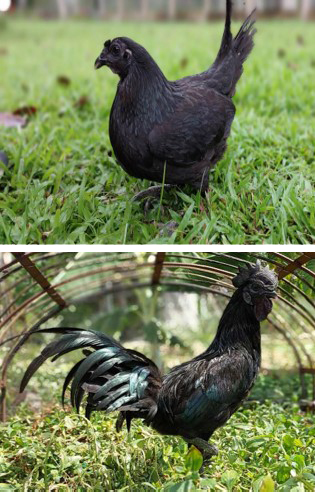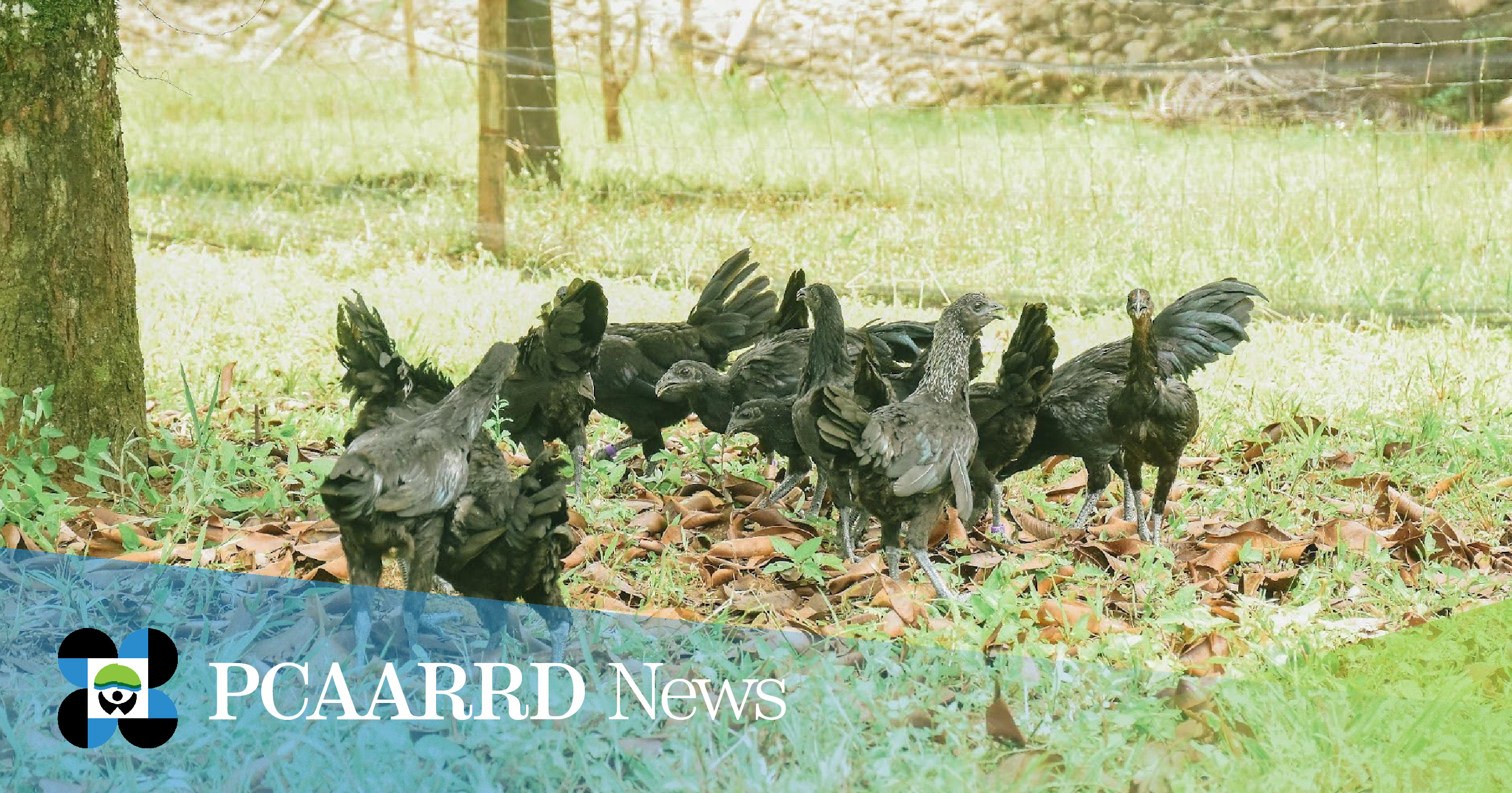Looking for a new business idea to take advantage of the growing poultry market?

The Caraga State University (CSU) introduces “Caraga Black,” a black native chicken from Caraga known for its black plumage, shank, black skin, and grayish meat. Its black skin color indicates higher pigmentation that can also be associated with higher antioxidant levels. Caraga Black Native Chicken’s (CBNC) meat has a distinct savory taste containing low cholesterol content, making it a guilt-free product among consumers.
Besides its unique characteristics and taste, CBNC offers more factors for its marketability, such as its potential nutraceutical properties and its resilience to climate change conditions in Caraga. Moreover, the hen’s body weight ranges from 1.25 to 1.45 kilograms (kg) while the rooster ranges from 1.6 to 2.2 kg.
The study’s establishment of the parent breeding stock consisted of 40 pullets and eight cockerels conducted in the Organic Native Chicken Project area of the CSU main campus and the Department of Agriculture Caraga’s (DA-Caraga) Trento Experimental Research Station (TESRS). The same set up was performed until the project produced a true-to-type breeding population of Caraga Black native chicken, with more than 80% uniformity in physical characteristics and growth performance.
Results of the study showed that this breed has 85% fertility, 84% hatchability, and 82% survival rate. When compared to other genetic groups of native chicken, the CBNC comes second with regards to its average live weight. It can be sold either as live or dressed chicken.
Moving forward, the project team still aims to upgrade the CBNC’s selection and breeding facility and improve its growth and reproductive performance.
To further improve the Caraga Black, two projects were conceptualized – “Development of Caraga Black Native Chicken (CBNC) through Breeding and Selection as Potential Niche Product in Caraga Region,” and “Improving Growth and Reproductive Performance of CBNC through Selection and Breeding.” Both projects are currently implemented by CSU and Trento station of DA-Caraga under the leadership of CSU’s Dr. Tomas M. Austral, Jr.
The development of a breeding true-to-type and continuous improvement of the CBNC was conceptualized by the Livestock Research Division of the Philippine Council for Agriculture, Aquatic and Natural Resources Research and Development of the Department of Science and Technology (DOST-PCAARRD) and implemented in partnership with CSU and DA-Caraga with the financial and technical support from DOST-PCAARRD.

